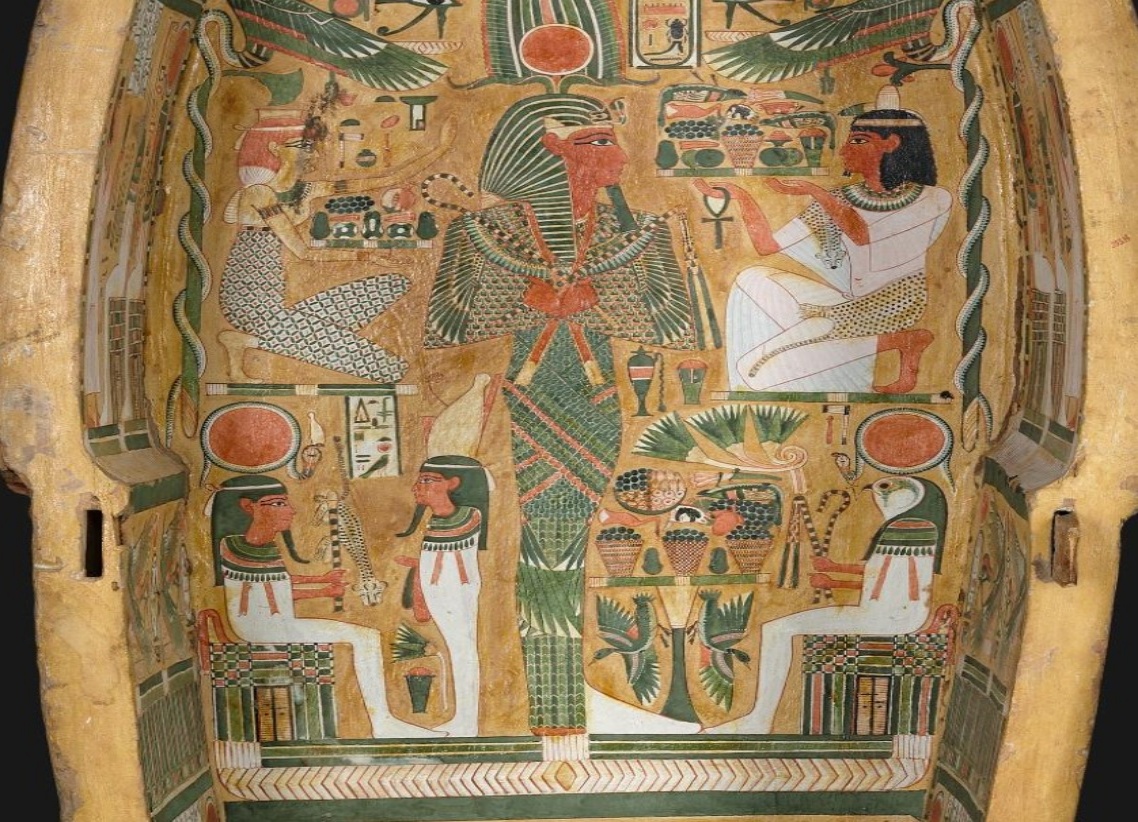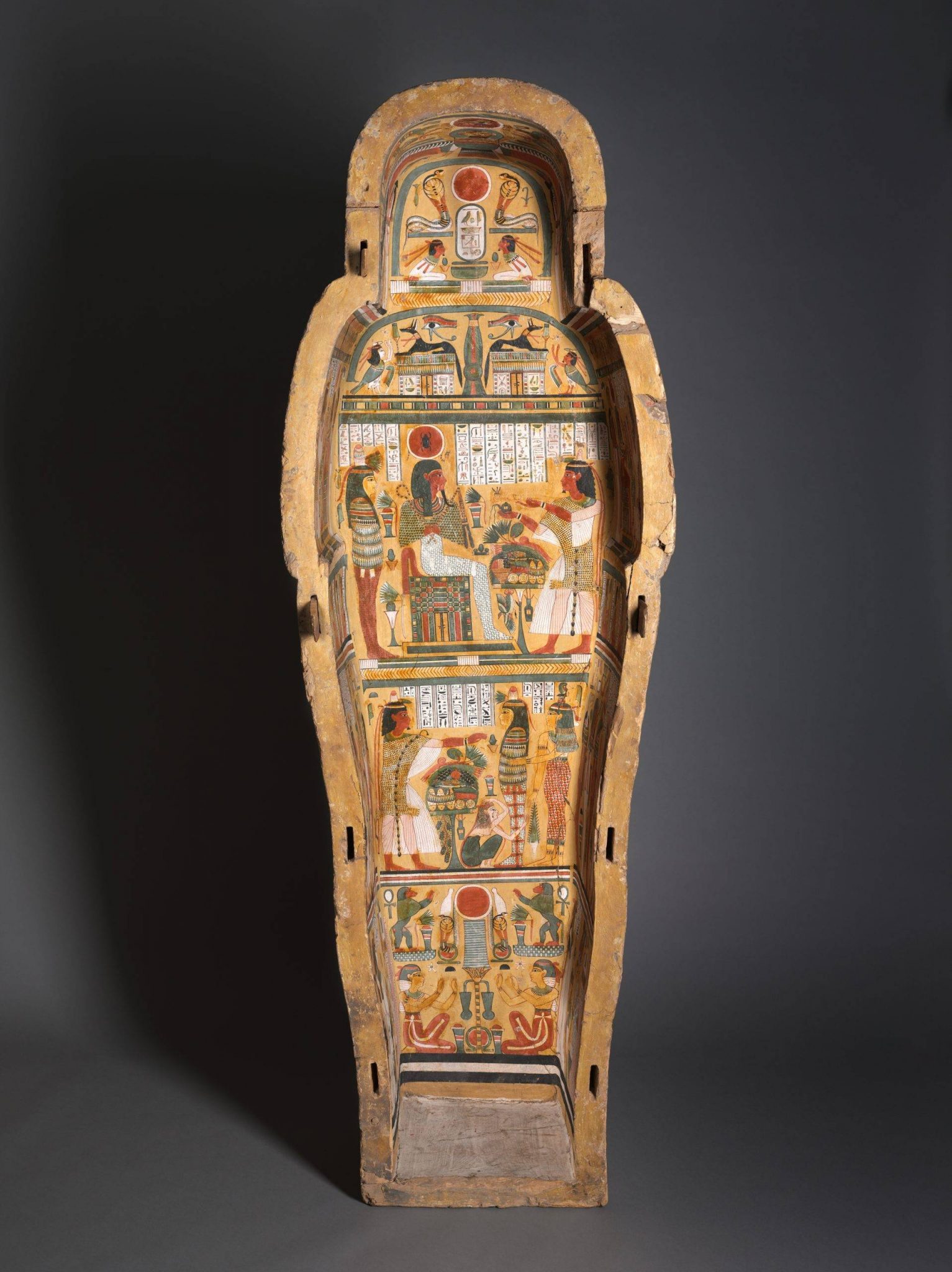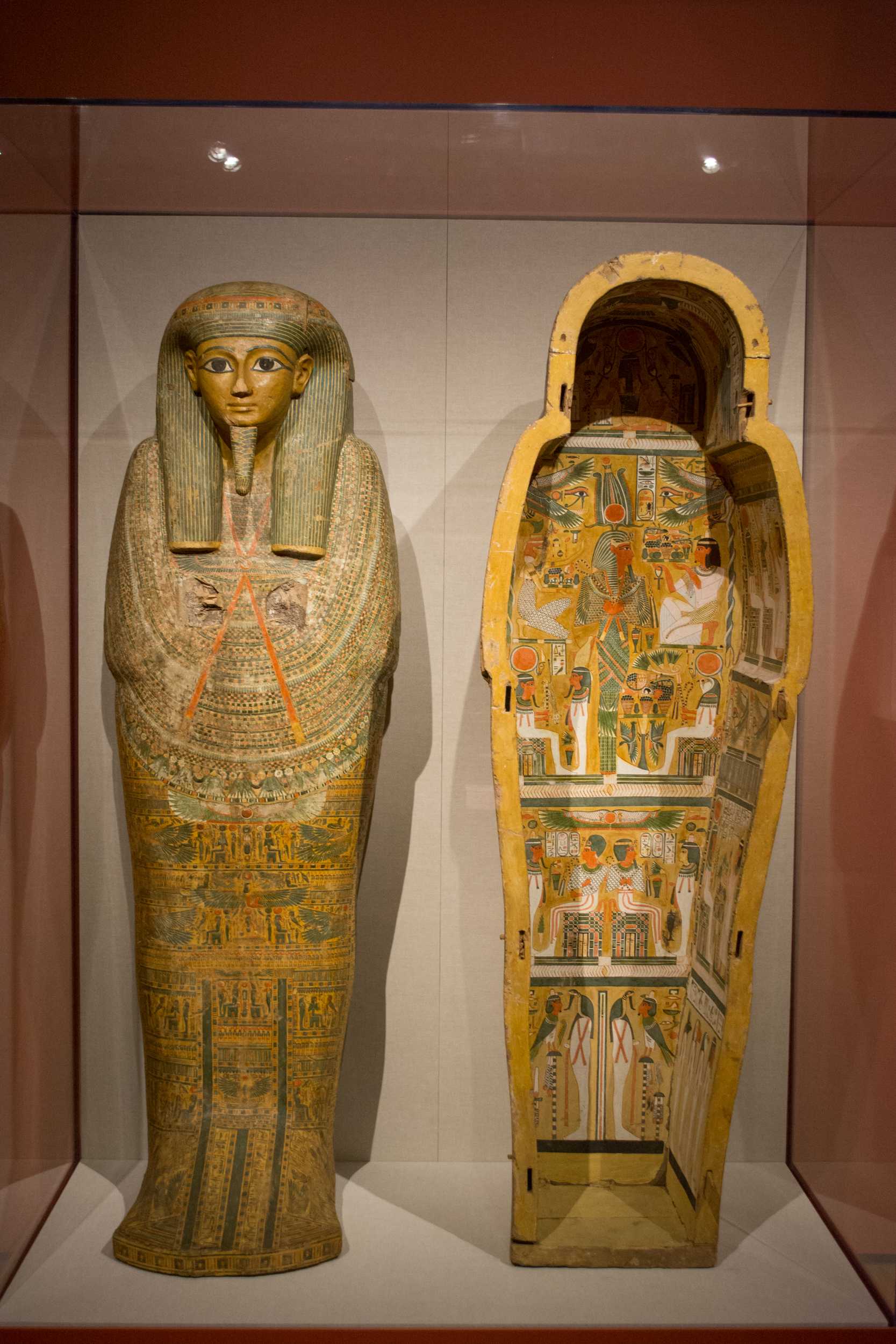Origin and meaning of the Bakenmut coffin: The door to Egypt’s post-21 dynasty

The Coffin of Bakenmut stands as a testament to the rich history and cultural evolution of ancient Egypt. Dating back to approximately 1000-900 BCE, this remarkable artifact originated in Thebes, during the late Dynasty 21 of the 3rd Intermediate Period. Crafted with meticulous detail from gessoed and painted sycamore, it now finds its home in the esteemed halls of the Cleveland Museum of Art, where it continues to captivate visitors with its beauty and historical significance.

During the era in which the Coffin of Bakenmut was crafted, Egypt underwent a period of significant change. The pharaohs of the time made the strategic decision to cease burials in the illustrious Valley of the Kings, instead opting for tombs in the Delta region to the north. This shift marked not only a geographical change in burial practices but also a shift in the political and cultural landscape of ancient Egypt.
As the focus of royal burials shifted away from Thebes, the security in the Theban necropolis began to wane. This change in dynamics led to a notable shift in burial practices among the elite citizens of Thebes. Wealthy individuals, no longer assured of the safety of their tombs in the once-secure necropolis, turned to alternative methods of burial. The result was the interment of coffins and funerary items in unmarked, undecorated family tombs cut into the cliffs along the west bank of the Nile.

The Coffin of Bakenmut serves as a poignant reminder of this turbulent period in Egyptian history. Its intricate craftsmanship and elaborate decorations offer insights into the religious beliefs and funerary practices of the time. The hieroglyphic inscriptions adorning its surface provide valuable clues about the identity and social status of its occupant, shedding light on the lives of the ancient Egyptians who once walked the streets of Thebes.

Moreover, the journey of the Coffin of Bakenmut from ancient Egypt to its current resting place in the Cleveland Museum of Art is a testament to the enduring legacy of ancient civilizations. Its presence in a modern museum setting allows contemporary audiences to connect with the past, bridging the gap between ancient history and the present day.

In conclusion, the Coffin of Bakenmut stands as more than just a relic of a bygone era. It is a tangible link to the past, a window into the lives and beliefs of the ancient Egyptians who crafted it with care. Through its intricate details and rich history, it continues to inspire awe and fascination, inviting us to delve deeper into the mysteries of ancient Egypt and the human experience.